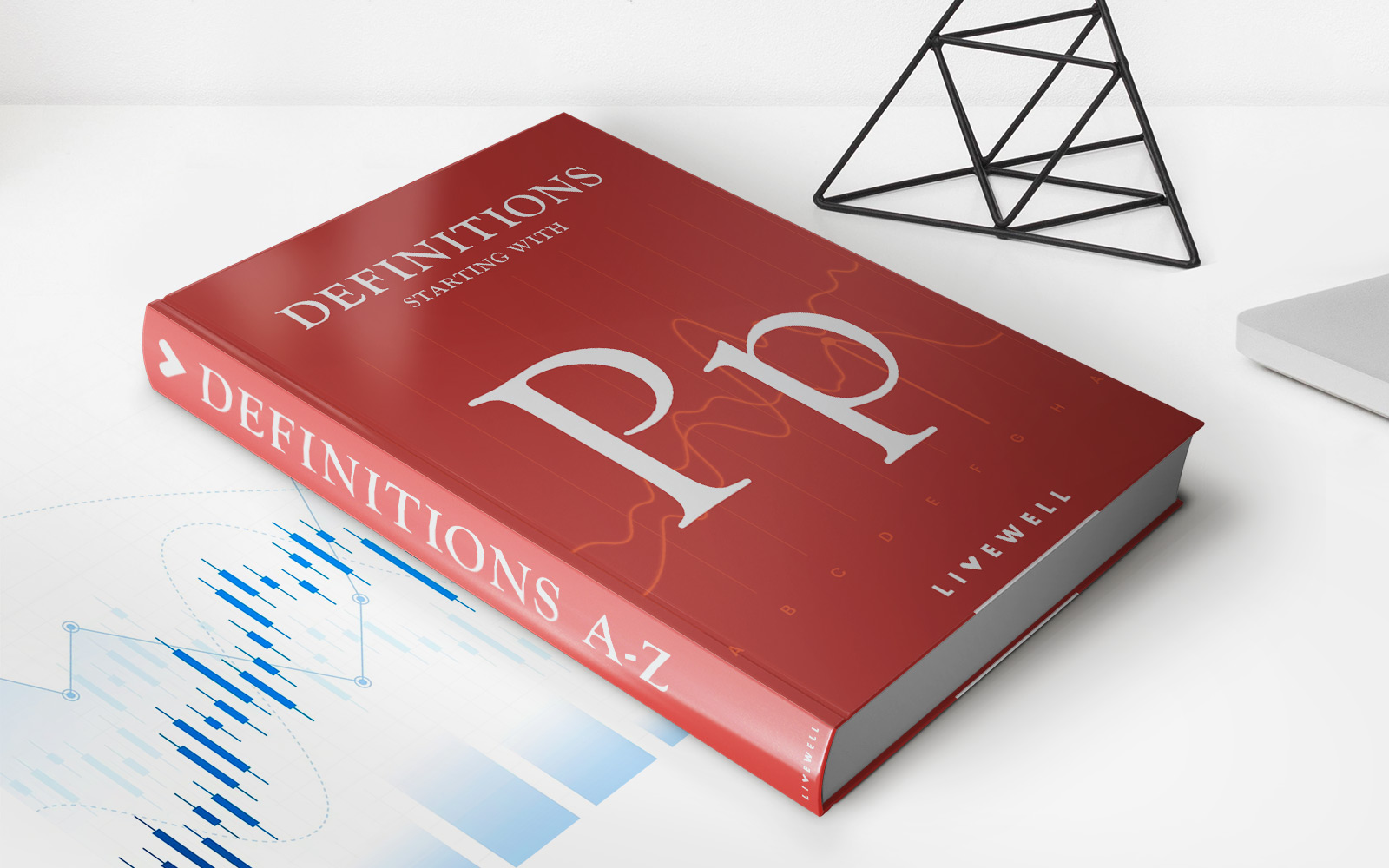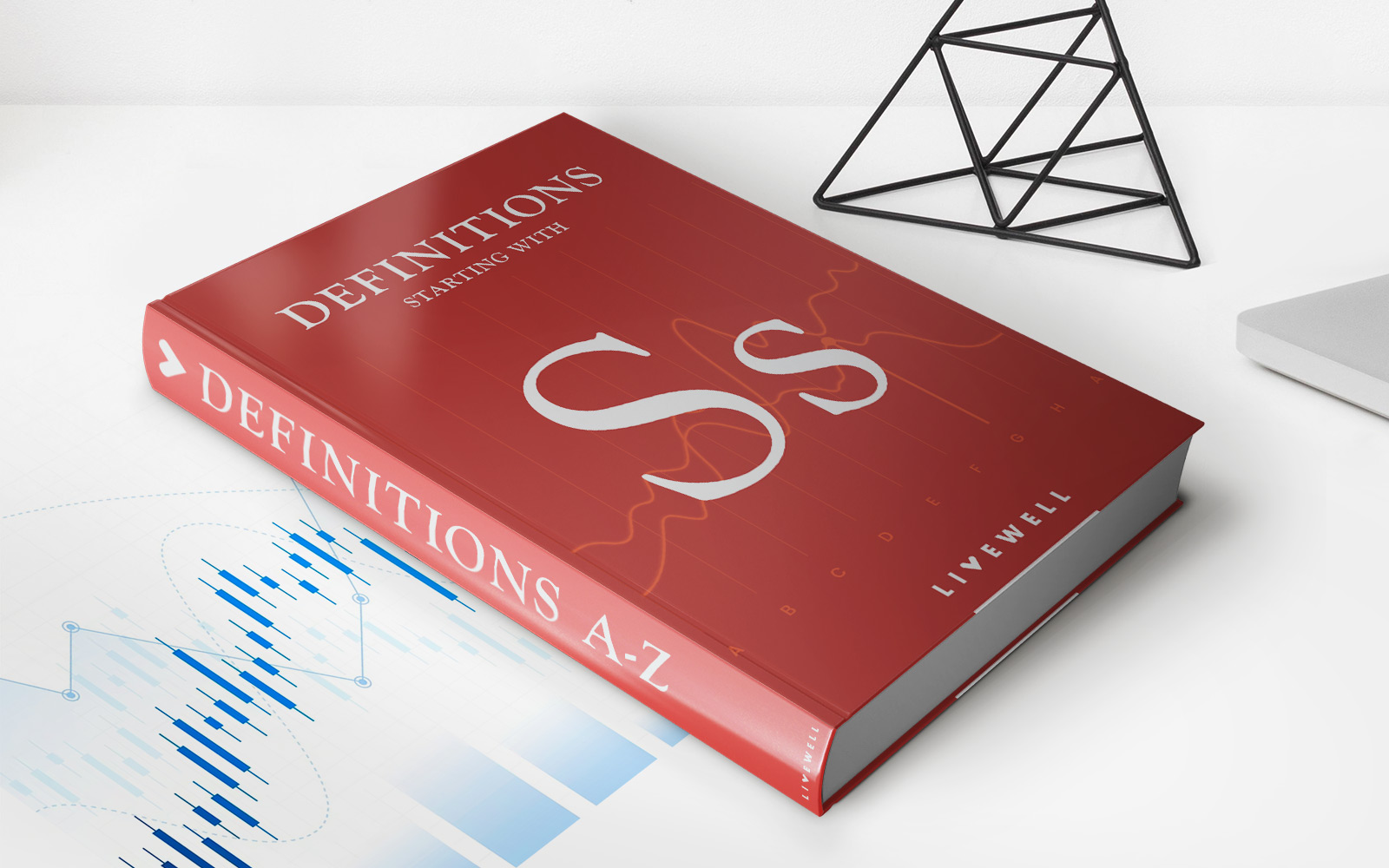

Finance
How Inflation Differs In The US And UK
Published: October 19, 2023
Learn about the contrasting inflation rates in the US and UK with our comprehensive analysis. Stay updated on the latest finance trends and predictions.
(Many of the links in this article redirect to a specific reviewed product. Your purchase of these products through affiliate links helps to generate commission for LiveWell, at no extra cost. Learn more)
Table of Contents
Introduction
Welcome to our comprehensive analysis of how inflation differs in the United States (US) and the United Kingdom (UK). Inflation is a critical economic indicator that measures the rate at which the general level of prices for goods and services is rising and, ultimately, eroding the purchasing power of a currency.
Understanding the dynamics of inflation is vital for individuals, businesses, and policymakers as it directly affects economic growth, interest rates, wages, and the overall cost of living. While inflation is a global phenomenon, it can vary significantly between countries due to various factors.
In this article, we will delve into the key factors influencing inflation in the US and the UK, the methods used to measure inflation in each country, and how these measurements differ. We will also compare inflation trends between the two nations and explore the underlying causes of any differences observed.
Additionally, we will examine the impact of inflation on both economies, including its effects on consumers, businesses, and government policies. By the end of this article, you will gain a comprehensive understanding of how inflation operates uniquely in the US and the UK, and how it shapes their respective economic landscapes.
Overview of Inflation
Inflation is a complex economic concept with both short-term and long-term effects on an economy. It refers to the general increase in prices of goods and services over time, leading to a decline in the purchasing power of a currency. Inflation can be caused by various factors, including changes in demand and supply, the money supply, and government policies.
There are several important terms used to describe different types of inflation:
- CPI (Consumer Price Index): This is the most common measure of inflation and reflects changes in the cost of a basket of goods and services typically consumed by households. The CPI is used to track changes in purchasing power over time.
- PPI (Producer Price Index): This index measures changes in the prices of goods and services at the wholesale level, before they reach the consumer. It is an essential gauge of inflationary pressures in the production process.
- Core Inflation: This is a measure of inflation that excludes volatile elements such as energy and food prices. Core inflation provides a better indication of underlying price trends.
- Hyperinflation: This extreme form of inflation occurs when prices rise rapidly, often exceeding 50 percent per month. Hyperinflation is typically associated with economic instability and a breakdown of the monetary system.
Inflation can have various impacts on the economy and individuals. While moderate inflation is generally considered beneficial as it stimulates spending and investment, high or unpredictable inflation can create economic instability and erode the value of savings and income.
Central banks play a crucial role in managing inflation by adjusting monetary policies, such as interest rates and the money supply, to maintain price stability. Their goal is often to achieve a target inflation rate, typically around 2 percent, which is considered healthy for economic growth.
In the next sections, we will dive into the factors influencing inflation and explore how it is measured in both the US and the UK.
Factors Influencing Inflation
Inflation is influenced by a multitude of factors, which can vary between countries and over time. Understanding these factors is essential for policymakers and economists to effectively manage and predict inflationary pressures. Here are some key factors that play a role in influencing inflation:
- Supply and Demand imbalances: When demand for goods and services surpasses the available supply, prices tend to rise. Conversely, when supply exceeds demand, prices may decrease. Changes in supply and demand dynamics can result from factors such as population growth, technological advancements, and changes in consumer preferences.
- Cost of Production: Fluctuations in the cost of labor, raw materials, and energy can significantly impact inflation. For example, if wages increase or the cost of importing goods rises, it can lead to higher prices for consumers.
- Monetary Policy: The actions taken by central banks to manage the money supply, interest rates, and credit conditions can have a substantial impact on inflation. Increasing interest rates or tightening monetary policy can help control inflationary pressures, while lowering rates can stimulate economic growth but may also lead to higher inflation.
- Government Policies: Fiscal policies, such as taxation and government spending, can influence inflation. For example, if the government increases spending without sufficient revenue, it may result in higher inflation. Additionally, specific policies that directly affect prices, such as subsidies or price controls, can impact inflation rates.
- Exchange Rates: Changes in exchange rates between currencies can affect inflation, particularly in countries heavily reliant on imports or exports. A depreciation in the domestic currency can lead to higher import prices, contributing to inflationary pressures.
- Expectations: Consumer and business expectations can influence inflation. If consumers anticipate higher inflation in the future, they may adjust their spending and saving behavior accordingly, further impacting price levels.
It’s important to note that these factors do not act independently but often interact with each other, creating a complex web of influences on inflation. Additionally, unique economic conditions and structural characteristics of a country can further shape the impact of these factors.
Now that we have a better understanding of the factors at play, let’s explore how inflation is measured in both the US and the UK.
Inflation Measurement in the US
In the United States, inflation is measured primarily using the Consumer Price Index (CPI), which is published by the Bureau of Labor Statistics (BLS). The CPI tracks the average price changes over time for a basket of goods and services that represents the consumption patterns of urban households.
The CPI is calculated by collecting data on thousands of items across various categories, including food, housing, transportation, and healthcare. These items are assigned weights based on their relative importance in the average household budget. The prices of these items are then tracked and compared to a base period, which is set at 100.
In addition to the CPI, the US Federal Reserve also monitors other measures of inflation, such as the Personal Consumption Expenditures (PCE) Price Index. The PCE Index, produced by the Bureau of Economic Analysis (BEA), takes into account a broader range of goods and services and uses different weightings compared to the CPI.
It’s worth noting that the CPI includes volatile items such as energy and food prices, which can significantly fluctuate. To address this, the BLS also publishes a measure of core inflation, which excludes these volatile components. Core inflation is considered a more reliable gauge of underlying price trends.
To ensure the accuracy and consistency of inflation measurement, the BLS conducts regular Consumer Expenditure Surveys to update the weights assigned to different components in the CPI. This helps reflect changes in consumer spending patterns over time.
Overall, the CPI is a widely recognized and trusted index that provides valuable insights into inflation trends in the US. Policymakers, economists, and businesses closely monitor these measurements to make informed decisions and take appropriate actions to manage inflationary pressures.
Now let’s explore how inflation is measured in the United Kingdom.
Inflation Measurement in the UK
In the United Kingdom, inflation is primarily measured using the Consumer Price Index (CPI), which is published by the Office for National Statistics (ONS). The CPI is similar to its American counterpart and tracks changes in the average prices of a basket of goods and services consumed by households.
The ONS collects data on thousands of goods and services across various categories, including housing, transportation, food, and recreation, to calculate the CPI. These items are assigned weights based on their importance in household spending, and the prices of these items are tracked and compared to a base period.
Like the US, the UK also publishes a measure of core inflation known as the CPIH, which includes housing costs. The CPIH provides a more comprehensive picture of inflation by reflecting changes in housing expenses, such as rents and mortgage interest payments.
In addition to the CPI, the ONS also calculates the Retail Price Index (RPI), which was historically the main measure of inflation. However, the RPI is considered less accurate due to its methodology, and it is no longer used as an official measure of inflation. Nonetheless, it is still used in some cases, such as for indexation of government bonds and some private sector contracts.
Similar to the US, the UK also monitors the Producer Price Index (PPI), which measures changes in the prices of goods at the wholesale level. The PPI provides insights into inflationary pressures at earlier stages of the production process.
To ensure the accuracy of inflation measurement, the ONS regularly reviews and updates the weights assigned to different components in the CPI to reflect changes in consumer spending patterns. Additionally, the ONS conducts a Household Expenditure Survey every few years to gather comprehensive data on household expenditures.
These inflation measurements are crucial for policymakers, businesses, and individuals in the UK. They help shape monetary policy decisions, guide wage negotiations, and provide valuable insights into the overall health of the economy.
Now that we understand how inflation is measured in both the US and the UK, let’s proceed to compare inflation trends in these two countries.
Comparison of Inflation Trends in the US and UK
When comparing inflation trends between the United States (US) and the United Kingdom (UK), it is essential to consider the differences in their economic landscapes, monetary policies, and structural factors that can impact inflation rates. Let’s explore how inflation trends have varied in these two countries.
In recent years, both the US and the UK have experienced relatively low and stable inflation rates. However, there have been some notable differences. In the US, inflation has generally remained modest, with the average annual inflation rate hovering around 2 percent, which is consistent with the target set by the Federal Reserve. This stable inflation environment has been supported by robust economic growth, moderate wage increases, and well-managed monetary policies.
On the other hand, the UK has faced slightly higher inflation rates compared to the US. In the aftermath of the 2008 financial crisis, the UK witnessed periods of elevated inflation due to factors such as a weaker British pound, rising import prices, and increased commodity costs. Additionally, the UK’s decision to leave the European Union (Brexit) introduced further uncertainty, which influenced inflation dynamics. However, the Bank of England, as the country’s central bank, has diligently managed inflation expectations and has taken measures to ensure that inflation remains within the target range of 2 percent.
Another notable difference is the impact of exchange rates on inflation. Due to its position as a global reserve currency and its influence on international trade, fluctuations in the US dollar can have significant implications for global inflation. In contrast, the impact of exchange rates on UK inflation tends to be more localized, with the value of the British pound directly affecting import prices, particularly for commodities and goods.
Furthermore, in recent years, both countries have experienced unique challenges that have influenced inflation trends. The US has witnessed relatively stable price levels, supported by well-established institutions, effective monetary policy frameworks, and a strong domestic demand. In contrast, the UK has faced additional factors such as Brexit-related uncertainties, which have introduced more volatility and potential disruptions to supply chains and trade relationships that can impact inflation.
Overall, while both the US and the UK have maintained relatively stable inflation rates in recent years, there are notable differences driven by economic conditions, monetary policies, exchange rates, and external factors. Understanding these variations and their underlying causes is crucial for policymakers, businesses, and individuals to make informed decisions and adapt to changing economic environments.
Now, let’s explore the factors that contribute to the differences in inflation between the US and the UK.
Causes of Inflation Differences
The differences in inflation rates between the United States (US) and the United Kingdom (UK) can be attributed to a variety of factors, including economic conditions, monetary policies, exchange rates, and structural differences. Let’s examine some key causes of inflation differences between these two countries.
Economic Growth: Economic growth is a fundamental driver of inflation. The US has experienced relatively steady and robust economic growth in recent years, which has kept inflation rates in check. On the other hand, the UK has faced periods of economic uncertainty, including the aftermath of the 2008 financial crisis and the ongoing challenges posed by Brexit. These factors have contributed to a more variable inflation environment.
Monetary Policies: The monetary policies pursued by the central banks of each country play a significant role in managing inflation. The Federal Reserve in the US and the Bank of England in the UK have different approaches to monetary policy. The Federal Reserve has focused on gradual interest rate increases and a balanced approach to maintaining stable inflation and promoting economic growth. In contrast, the Bank of England has faced the dual challenge of managing inflation while accommodating the uncertainties of Brexit. The differing policy stances and economic priorities can lead to variations in inflation rates.
Exchange Rates: Exchange rate fluctuations can impact inflation rates, particularly in import-dependent countries like the UK. A weaker currency, such as the British pound, can lead to higher import costs and, subsequently, higher inflation. In contrast, the US dollar’s position as a global reserve currency and its influence on international trade can moderate the impact of exchange rate fluctuations on US inflation.
Structural Factors: Structural differences between the US and the UK can also contribute to variations in inflation rates. For example, differences in labor market dynamics can impact wage growth and production costs, influencing inflation. Additionally, variations in industry composition, energy markets, and government policies can all contribute to inflation differences between the two countries.
External Factors: Both countries are not immune to the impact of global economic events and external shocks. Factors like changes in global commodity prices, geopolitical tensions, and international economic developments can influence inflation rates in both the US and the UK. The interconnectedness of the global economy means that external factors can have ripple effects on inflation dynamics.
While the US and the UK share similarities in their inflation goals and face some common influences, such as global economic trends, differences in economic conditions, monetary policies, exchange rates, and structural factors contribute to variations in their inflation rates. Understanding these causes allows policymakers and stakeholders to develop targeted strategies to manage inflation and promote economic stability.
Next, let’s explore the impact of inflation on the economies of the US and the UK.
Impact of Inflation on the US Economy
Inflation has a significant impact on the economy of the United States (US), affecting various sectors, businesses, consumers, and policymakers. Let’s examine some key impacts of inflation on the US economy:
1. Purchasing Power: Inflation erodes the purchasing power of consumers as the prices of goods and services increase. As a result, individuals may experience a decrease in their standard of living if their incomes do not keep pace with inflation. This can impact consumer spending patterns and overall economic growth.
2. Interest Rates: Inflation plays a crucial role in determining interest rates. If inflation rises, central banks may increase interest rates to curb inflationary pressures. Higher interest rates can make borrowing more expensive, which can impact business investment and consumer borrowing for housing and other large purchases.
3. Employment and Wages: Inflation can influence employment and wage levels. As prices increase, workers may seek higher wages to maintain their purchasing power, leading to wage inflation. This can put pressure on businesses to either increase wages or reduce their workforce, affecting the labor market dynamics.
4. Investment and Business Decisions: Inflation can impact business decisions and investment strategies. Uncertainty about future prices can lead to delayed investment, as businesses may be unsure of the profitability of their ventures. Additionally, inflation can increase costs for businesses, including raw materials and labor, affecting profitability.
5. Government Policy: Inflation has implications for government policies, particularly in the areas of fiscal and monetary policy. Central banks may adjust interest rates and money supply to manage inflation. Furthermore, inflation impacts government revenues through taxes, as rising prices can lead to higher tax collections.
6. Savings and Investments: Inflation can affect financial planning and savings habits. Inflation erodes the value of savings over time, particularly if interest rates do not keep pace with inflation. This can impact individuals’ ability to meet long-term financial goals, such as retirement planning.
However, it’s important to note that moderate inflation can be beneficial for the economy. It stimulates spending, encourages investment, and can lead to technological advancements and productivity growth. Central banks aim to maintain a delicate balance between price stability and economic growth to achieve sustainable inflation levels.
Overall, the impact of inflation on the US economy is multifaceted and requires careful consideration by policymakers, businesses, and individuals. Understanding these impacts allows stakeholders to make informed decisions and adapt to changing economic conditions.
Next, let’s explore the impact of inflation on the economy of the United Kingdom.
Impact of Inflation on the UK Economy
Inflation has a significant impact on the economy of the United Kingdom (UK), affecting various sectors, businesses, consumers, and policymakers. Let’s explore some key impacts of inflation on the UK economy:
1. Consumer Purchasing Power: Inflation erodes the purchasing power of consumers as the cost of goods and services increases. This can have a direct impact on the disposable income of households, potentially leading to reduced consumer spending and a decline in overall economic activity.
2. Interest Rates and Borrowing: Inflation influences interest rates set by the Bank of England. When inflationary pressures increase, the central bank may raise interest rates to control inflation. Higher interest rates can increase borrowing costs for businesses and consumers, potentially leading to a decrease in investment and consumption.
3. Business Costs and Profitability: Inflation can increase the costs of production for businesses, including raw materials, energy, and wages. If businesses are unable to pass these cost increases onto consumers through higher prices, their profit margins may be squeezed. This can impact business investment decisions and overall profitability.
4. Savings and Investments: Inflation affects the value of savings and investments. If the rate of inflation exceeds the rate of return on savings and investment vehicles such as bank accounts or bonds, the real value of these assets erodes over time. This can discourage savings and impact long-term financial planning for individuals and households.
5. Wage Growth and Employment: Inflation can impact wage growth and employment dynamics. Rising prices may lead workers to demand higher wages to maintain their standard of living. However, if wage growth outpaces productivity gains, it can lead to higher labor costs for businesses and potentially impact employment levels.
6. Government Finances: Inflation can have implications for government finances. As prices increase, tax revenues may rise, providing additional funds for public expenditure. However, if inflation becomes too high, it can also lead to increased government spending and borrowing as policymakers seek to stimulate economic growth.
7. Import and Export Competitiveness: Fluctuations in exchange rates, influenced by inflation, can impact a country’s competitiveness in international trade. If a weaker currency leads to higher import prices, it can increase inflationary pressures. On the other hand, a weaker currency may also improve export competitiveness, potentially boosting economic growth.
Striking a balance is crucial as moderate inflation can be beneficial for the economy, providing price stability and encouraging spending and investment. However, when inflation exceeds a manageable level, it can erode consumer purchasing power, increase uncertainty, and disrupt economic stability.
Understanding the impact of inflation on the UK economy enables policymakers, businesses, and individuals to navigate economic conditions effectively and make informed decisions to promote stability and growth.
Next, let’s conclude our analysis on how inflation differs in the US and the UK.
Conclusion
Inflation is a critical economic indicator that plays a significant role in shaping the economies of both the United States (US) and the United Kingdom (UK). While inflation is a global phenomenon, understanding how it differs between countries is essential for policymakers, businesses, and individuals.
In this article, we have explored various aspects of inflation in the US and the UK. We examined the factors influencing inflation, including supply and demand imbalances, cost of production, monetary policies, and exchange rates. Additionally, we delved into the methods used to measure inflation, such as the Consumer Price Index (CPI) in both countries.
We compared inflation trends, highlighting that the US has generally experienced moderate and stable inflation, while the UK has faced slightly higher inflation rates influenced by factors like Brexit-related uncertainties and exchange rate fluctuations. Furthermore, we discussed the causes of inflation differences, including economic conditions, monetary policies, exchange rates, and structural factors.
Furthermore, we explored the impact of inflation on the economies of both countries. In the US, inflation affects purchasing power, interest rates, employment, and business decisions. In the UK, inflation influences consumer purchasing power, borrowing costs, business profitability, and government finances.
It’s important to note that both countries aim to maintain a delicate balance between managing inflation and promoting economic growth. Central banks play a pivotal role in managing inflation through monetary policy decisions, while policymakers and businesses monitor inflation to make informed decisions.
Understanding the unique dynamics of inflation in the US and the UK allows stakeholders to adapt to changing economic conditions, make sound financial decisions, and support sustainable economic growth.
In conclusion, while inflation may differ between the US and the UK due to various factors, its impact on the economies is significant and requires constant vigilance and informed decision-making. By staying informed about inflation dynamics, stakeholders can navigate the challenges and opportunities that arise from this important economic indicator.














